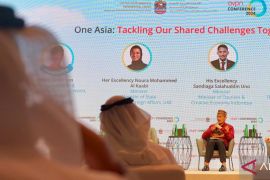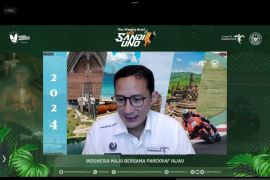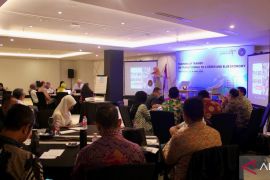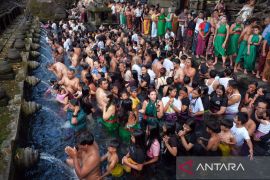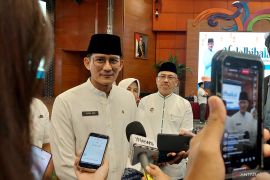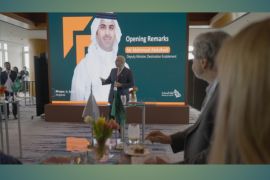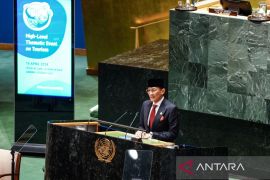According to Christina L. Raudatin, a meeting, incentive, conference, and exhibition (MICE) researcher, Indonesia has the potential to develop its tourism using the bleisure concept, as the country has prospective supporting resources.
Developing tourism by applying this concept can help the country attract investment in the tourism sector. Essentially, investment in the tourism sector is still low, with last years total recorded value reaching only Rp15 trillion.
Chief of the Capital Investment Coordinating Board (BKPM) Thomas Lembong revealed on Friday (Feb 17) that in the last five years, the tourism sectors contribution to the total investment reached solely about 2.2 percent, or Rp51.2 trillion of the total investment in the country.
Hence, the BKPM will focus on highlighting the countrys investment potential through the Regional Investment Forum (RIF). It will promote the countrys tourism potential and its supporting infrastructure.
In a press statement on Friday, the BKPM head announced that his office will hold the RIF in Nusa Dua, Bali, on February 23, 2017, to promote investment in the tourism sector and its supporting infrastructure.
"Until now, investment in the tourism sector and its supporting infrastructure is not yet optimal. Hence, we will boost this, so that it will increase," Lembong remarked. Hence, the RIF will highlight the theme: "Investment Promotion in Tourism Industry Sector and Its Supporting Infrastructure."
It aims to promote the countrys tourism investment potential to current and prospective foreign and domestic investors.
The BKPMs data in 2016 indicated that the value of domestic investment in the tourism sector had reached Rp2.2 trillion, while foreign investment in the same sector stood at Rp12.8 trillion, bringing the total value of investment in the tourism sector last year to Rp15 trillion.
This sector has relatively good prospects, as over the last five years, it had recorded an average growth of 18 percent per annum.
The BKPM chief, who is also a former trade minister, said that besides encouraging investment in the tourism sector and its supporting infrastructure, his office will also continue to galvanize investment growth outside Java Island.
The realization of investment in 2016 indicated that the investment ratio in Java and other parts of Indonesia was recorded at 54 percent as compared to 45 percent.
The investment growth outside Java in 2016 was recorded at 22.2 percent, while that in Java stood at only 11 percent. Such growth levels are in line with the directives of President Joko Widodo who is seeking equitable distribution of investment, including investment in the tourism sector and its supporting infrastructure.
Hence, the organizers of RIF will also invite tourism service industries and companies doing business in the infrastructure, banking, and financial services sectors. It laid emphasis on investment for the development of tourism.
The forum will also be attended by construction and tourism business associations and the organizers of five tourism special economic zones (SEZ) in the eastern part of Indonesia: the Mandalika SEZ in West Nusa Tenggara, the Morotai SEZ in North Maluku, the Labuan Bajo SEZ in East Nusa Tenggara, the Wakatobi SEZ in Southeast Sulawesi, and the Bunaken SEZ in North Sulawesi.
Moreover, the tourism sector can attract greater investment by also offering opportunities for the development of infrastructure that will support growth in tourism based on the bleisure concept.
Hence, Christina L. Raudatin, a lecturer and researcher on MICE, suggested Indonesia should develop its tourism using the bleisure concept, as the country has prospective supporting resources in the sector.
"Now, the bleisure travel concept is expanding. It will be better if the government could develop it maximally," Raudatin stated.
Moreover, the current mindset in Indonesia is generally limited to merely leisure and pleasure tourism. Thus, the tourism strategies are still limited to development of the leisure segment.
The business traveler segment has something different (to offer), with varying characteristics, according to MICE researcher.
Hence, she suggested that Indonesia should start working on the business traveler segment by formulating appropriate strategies, as travelers in this segment have different characteristics.
Business travelers generally seek comfort and support of adequate human resources for the service. Today, we are focusing on leisure but often forget the infrastructure and development of human resources.
The travel segment of MICE has the potential to grow, as it is easy to forecast.
"Every year, most of the events can be forecast," Raudatin noted.
Indonesia has 16 locations that have become the governments focus for being developed as MICE travel destinations. However, until today, most of the events are still held in Jakarta and Bali, as these two cities are viewed as being the most ready in terms of accessibility and facilities.
Hence, for MICE, the government should focus on some destinations that are already considered ready. Overall, Indonesia has, until now, just about seven destinations that are viewed as MICE travel destinations.
According to Raudatin, in future, more MICE travel destinations would be readied and policies or strategies for the "bleisure" tourism development concept would be put in place. ***3***
(A014/INE)
EDITED BY INE
(T.A014/A/KR-BSR/F001) 18-02-2017 17:40:07
Reporter: Andi Abdussalam
Editor: Fardah Assegaf
Copyright © ANTARA 2017
